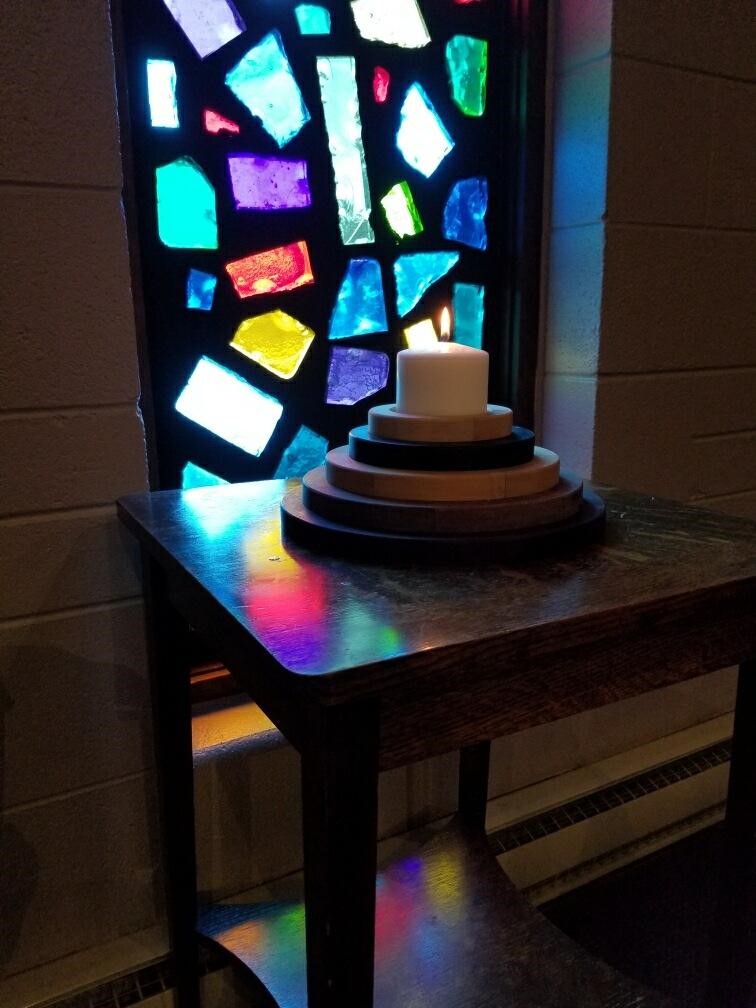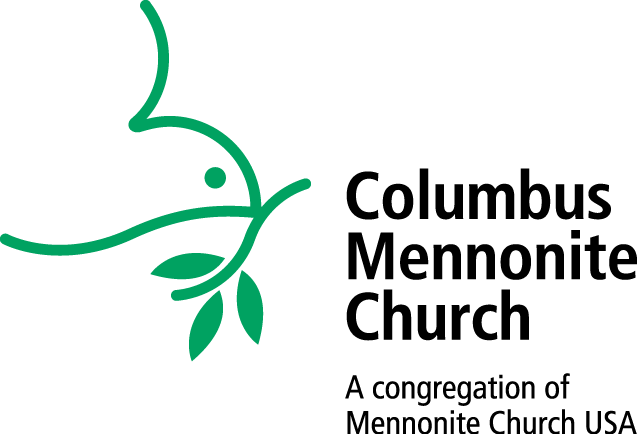CMC Worship in Place | July 19 | Parables 3
Sermon Text: Wheat and weeds
OK, so let’s get this out of the way, right away. For the second week in a row, the second parable in a row, we have a parable, followed by the disciples coming to Jesus, asking for an explanation, to which Jesus gives a precise decoding of the symbolism within the parable. For all the reasons Mark mentioned last week with the Parable of the Sower and its explanation, this is bothersome. Parables are supposed to provoke our spiritual imagination, right? Not serve as a formula where each part equals something else. Couldn’t this have been one of those times Jesus responded to their question with something like: “I don’t know, what do you think it means?”
What’s doubly bothersome about this Parable of the weeds among the wheat is that the explanation seems to give a clear division of the world into two kinds of people. The good seed, sown by the Divine Representative, the Human One, the wheat; and bad seed, sown by the evil one, the weeds. The bad seed, the children of the evil one, are harvested by the angels and destined for the fire. And the good seed are destined, as it says, to “shine like the sun in the kin-dom of their Father/Mother God.
It reminds me of that saying: There are two kinds of people in this world: Those who believe there are two kinds of people and those who don’t. If you’re like me, the kind of person who doesn’t think there are two kinds of people, unlike those other people who do, then this explanation of the parable is problematic. Not to mention it being problematic that I seem to have fallen for the trick of agreeing that there actually are two kinds of people. Darn.
If it’s any consolation, scholars…
CMC Worship in Place | July 12 | Parables 2
Sermon text:
Tending the Soil
I’m fairly certain that I am on record somewhere that this is not one of my favorite passages of scripture. Let me explain why:
Last week Joel began our worship series on the parables by talking about how Jesus’ use of parables as a teaching method was perhaps meant to help people understand just how much they didn’t understand. He told us that parables help us move from hearing to truly listening. They invite us to see our lives and our world reflected–or perhaps more accurately, refracted–in the world of the parable. One day we catch a glimpse of ourselves in the older son, the next we recognize our own longing in the father character. Some days we might even feel like the unnamed mother, the thorny weed, the upset laborer, or the sheep who has wandered away.
Parables leave us scratching our heads a little bit as they resist being nailed down into conclusions that are too tidy or meanings that let us walk away feeling like we’ve adequately digested the story.
There’s a lot of overlap between parables and poetry in this way. I recently finished a book called The Poet, The Warrior, The Prophet in which the author, Rubem Alves, describes the way poetry blossoms in unclarity and invites readers to find meaning and beauty in the empty, silent spaces between the words. He writes, “Don’t you know that a clear idea brings the conversation to a halt, whereas one unclear idea gives wings to the words and the conversation never ends?”
[As an aside: If these parables leave you longing for conversation that never ends, we hope you might consider joining us for the Parable discussion groups we’ll be hosting at 11am on Sundays throughout this series. Conversations about parables and…
CMC Worship in Place | July 5 | Parables 1
Sermon | Speaking in parables | Joel Miller
Text: Matthew 13:10-17
My memories of what happened in the college classroom are fuzzy at best, but here’s something I haven’t forgotten.
During my first year at Hesston College – that’s a little Mennonite liberal arts college in Kansas – During my first year, I was in a New Testament class with some second career folks who were training to be pastors. One of their assignments was to write their own parable, and then share it with the class. And, after all these years, I still remember one of them.
Here it is, more or less:
Some city dwellers wanted to know what it was like to be a farmer, so they decided to visit three different farmers to see what they could learn. “What’s the secret to good farming?” they asked. The first farmer took them out to the fields where people were picking. “The secret to farming,” said farmer #1, “is good old fashioned hard work.” The second farmer took them into her office where there were stacks of paper and multiple computer screens. “This is the secret to farming,” said farmer #2. “Keeping good records, communications, and management.”
The third farmer led them out behind the barns by the manure pit. They stood there a while seeing and smelling the manure. Then the farmer said, “The secret to farming is knowing what to do with all the crap. If you know what to do with this, you’ll know what to do with everything else.”
I’m not sure why I still remember that. It could be because I was fresh off the farm myself, intrigued with these familiar images that evoked my world in distant Ohio. It could be that it’s just a really good parable, complete with the set up and the climax that leaves…

CMC Worship in Place | 1000 Days in Sanctuary | June 28
1000 Days in Sanctuary
Prelude
Peace Candle | Edith and family
As we worship in place today, we light a Peace Candle in our home,
inviting you to light a Peace Candle in your home.
The flame joins us in spirit across distance,
along with our sister church in Armenia, Colombia.
Welcome and Call to Worship | Joel Call
Sanctuary Prayer
God our Sanctuary, grant us and our neighbors, near and far, courage in our hearts, peace in our homes, and justice in our streets. Amen.
Dios nuestro Santuario, concédenos y nuestros vecinos, cercana y lejana, coraje en nuestros corazones, paz en nuestros hogares, y justicia en nuestras calles. Amen.
HWB 358 | Oyenos, mi Dios (Hear us, my God) | Tom Blosser (piano/vocal), Quinn Blosser (violin)
(Words: Oyenos, mi Dios, repeat, Listen to your people, Oyenos, mi Dios)
Children’s Time | Elisa Leahy
Song | Anita’s Song
Pastoral Prayer and Offering Dedication | Joel Call
Scripture | Joshua 2:1-21 | Carrie Vereide
Sermon | Rahab’s walls | Joel Miller (text below)
STJ 115 | Yonder come day | Tom Blosser, Zoe Blosser
Invitation to Visit | Edith Espinal
Benediction | Joel Call
———————-
Sermon Text:
For the first time in quite a while, I’m speaking a sermon from inside our church building. It feels like the right place to be right now.
This past week Gwen sent me an email saying she’s been counting the days she’s been working from home rather than here, noting that Sunday, June 28, is the 100th day. She also noted the co-incidence of Edith’s 10-fold marking of time on this same day, 1000 days in sanctuary.
We’ve called this space our sanctuary for many years. That word has gained new meaning over this stretch of time. This building, and, importantly, this community of people, have become a sanctuary for Edith. For Edith this has been an experience of refuge and vulnerability, of publicity and isolation, of staying united with her family and separated from the full life she hopes to live. For us this has been an experience of hospitality, of partnerships,…

CMC Worship in Place | Central District Conference Sunday | June 21
Worship in Place | Central District Conference Sunday | June 21, 2020
Welcome and Call to Worship | Chaska Yoder
Peace Candle | Erin Leatherman
As we worship in place today, we light a Peace Candle in our home, inviting you to light a Peace Candle in your home. The flame joins us in spirit across distance, along with our sister church in Armenia, Colombia.
HWB 295 | Christ is Coming! Let creation | Phil Yoder
Children’s Time | Martha Ruggles
Pastoral Prayer | Chaska Yoder
Special Music | Creation Groans | By Phil Yoder
Mission Moment | Central District Conference | Barbra Gant
Scripture | Romans 8:18-27 | Eliza Graber
Sermon | Spirit bless our souls with yearning | Joel Miller
Hymn | Holy Spirit Bless | Katie Graber
Benediction | Chaska Yoder
Sermon Text
Every two years the leadership of Central District Conference chooses a theme. Our current theme is worded as a prayer: Spirit, bless our souls with yearning.
The language comes from a liturgy in one of our hymnals, Sing the Journey, otherwise known as the green one, #124. It says, “I will light a light in the name of the Spirit, who encompasses the world and blesses my soul with yearning.”
It seems to me that this is a prayer for adults – we adults who have forgotten how to yearn, how to long for something good.
Children are so, so good at transparent longing. A baby cries for milk, for comfort. Their yearning is for the most basic of human needs, and they communicate it very effectively, at high volume, regardless of the hour.
A bit older, children are clear when they want something. A purchase denied, or a playdate delayed, or a treat deferred can result in what feels to us mellowed adults like a disproportionate response of inconsolable outrage. All the while, inwardly, we may be wishing that we too could be so open about how…

